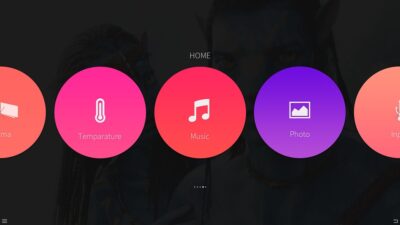As we delve into 2023, the landscape of user experience (UX) continues to evolve at an unprecedented pace. The integration of technology into our daily lives has resulted in a heightened expectation for intuitive, seamless, and personalized user experiences across applications and platforms. Companies must remain agile, adapting to these shifts to meet users’ demands effectively. Here are some key UX trends to watch for in 2023.
1. Hyper-Personalization
In 2023, hyper-personalization is set to become a core component of UX design. Leveraging AI and big data, businesses can tailor experiences to meet individual user preferences and behaviors. This goes beyond basic customization options; it includes predictive analytics that anticipate user needs before they arise. For instance, e-commerce platforms are increasingly using machine learning algorithms to provide personalized product recommendations, enhancing overall satisfaction and engagement.
2. Voice and Conversational Interfaces
Voice-activated assistants and chatbots are becoming ubiquitous, allowing users to interact more naturally with technology. In 2023, conversational interfaces are expected to evolve further, providing more contextually aware and contextually relevant interactions. With advancements in natural language processing, users will experience chatbots that understand nuances in human conversation, making digital interactions more fluid and intuitive.
3. Inclusive Design
As awareness of diversity and inclusivity in UX grows, more designers will incorporate accessibility features into their products. By 2023, inclusive design isn’t just a compliance issue; it’s a necessity for businesses aiming to reach a broader audience. Creating digital experiences that accommodate users of all abilities, including those with visual or auditory impairments, will become a standard practice, ensuring that all users can engage with content effortlessly.
4. Augmented and Virtual Reality (AR/VR)
The integration of AR and VR technology into user experiences is on the rise. In 2023, we can expect a surge in applications that utilize these immersive technologies for retail, education, and entertainment. For instance, consumers will be able to virtually try on clothes or experience products in a 3D environment before making a purchase. This not only enhances engagement but also builds confidence in the buying process.
5. Sustainability in UX Design
Sustainability is increasingly influencing purchasing decisions, and UX design is no exception. In 2023, businesses will prioritize sustainable practices, ensuring that their digital products promote eco-friendly choices. This includes optimizing UX to encourage users to make responsible decisions, reducing the carbon footprint of digital interactions, and designing interfaces that advocate for sustainability, such as energy-saving features or promoting sustainable products.
6. Efficient and Minimalist Design
With the wealth of information available online, users are demanding clarity and efficiency in their digital interactions. The trend towards minimalism continues in 2023, with designers focusing on clean, intuitive interfaces that increase usability. Streamlined design reduces cognitive load, enabling users to navigate platforms effortlessly. This includes optimizing mobile experiences, where screen space is limited, making every pixel count.
7. Gamification
Gamification elements are increasingly used to enhance user engagement across various platforms. By integrating game-like features, such as rewards, challenges, and interactive elements, brands are creating more captivating experiences. In 2023, expect to see gamification extend beyond traditional industries like gaming and fitness apps into areas such as finance and education, fostering a sense of community and competition among users.
Conclusion
As we move deeper into 2023, the future of user experience is shaped by advancements in technology, shifting consumer expectations, and a greater emphasis on inclusivity and sustainability. To thrive in this landscape, businesses must embrace these trends and prioritize user-centric design that fosters trust and satisfaction. By doing so, they not only enhance their offerings but also create lasting connections with their users, ensuring long-term success in an ever-evolving digital world.



